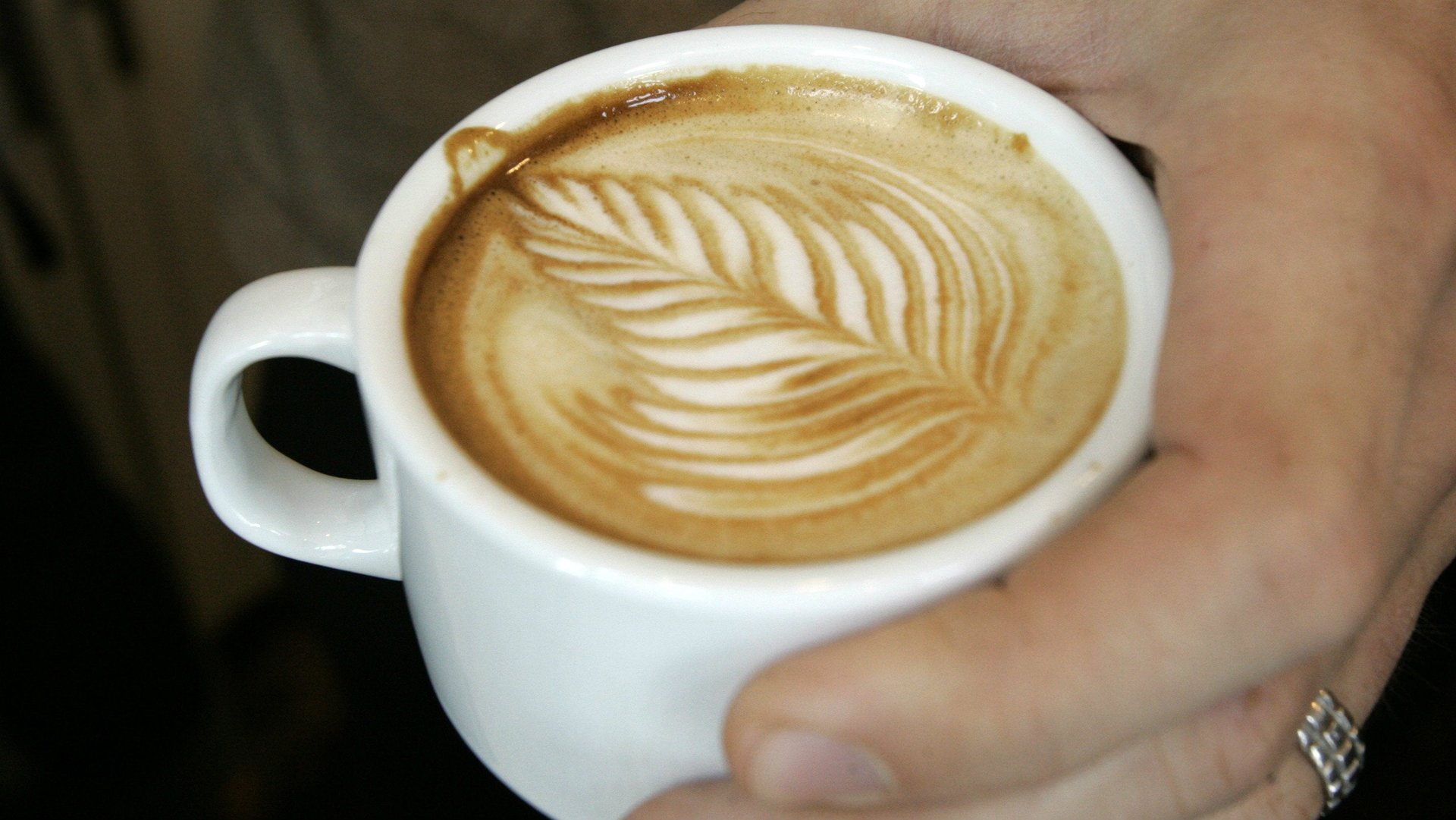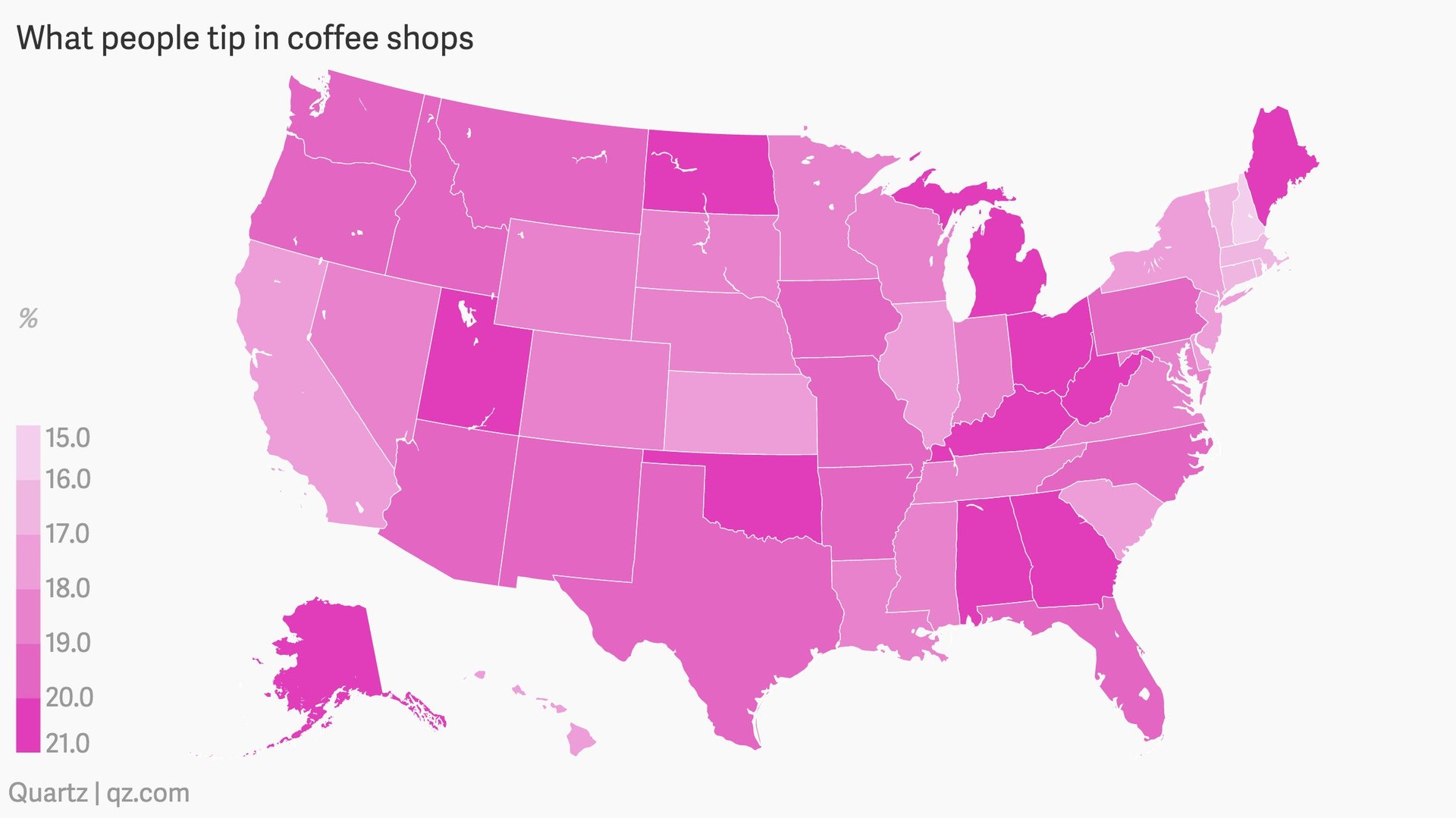You probably aren’t tipping enough for your coffee
This post has been updated.


This post has been updated.
No matter where you live or what you do, chances are you have asked yourself, “Do I need to tip this person?” Your Uber driver? The lady who washes your hair before another one cuts it? The barista who drew a smiley face in your coffee foam to cheer you up this morning? And if the answer is yes, the next question is, “How much?”
For that kind barista, at least, new survey data from the electronic payment service Square offers some answers.
Square offers small business owners the hardware and software to accept credit card payments through smartphones and tablets. It also surfaces and analyzes transaction data to help owners find room for money-making improvements. In honor of National Coffee Day today, it crunched the numbers across thousands of coffee shops in the US, from local food trucks to chains with hundreds of locations, to compare coffee purchasing behavior across the country.
Here’s how America’s coffee shop tipping practices look:

Overall, cafe goers are relatively generous everywhere, but with an average rate of 21%, North Dakotans tip the best. Alabama, Alaska, Georgia, Kentucky, Maine, Michigan, Ohio, Oklahoma, Utah, and West Virginia all had average tip rates of 20%. The nationwide average rate was 18.2%, higher than the 16.5% overall average tipping rate Square found in a survey on all transactions, not just coffee-related, last year. Even the lowest rate, at 15% in New Hampshire, was still within the 15-20% range generally recognized as the appropriate tip range.
But baristas are hardly making out like coffee-slinging bandits. In 2014, one survey found that the average barista salary was only about $22,000/year. It’s important to note that Square’s data doesn’t count people who didn’t tip at all—and a 2015 Zagat survey found that the vast majority of Americans do not tip on every coffee shop order.
Nationally, 25% of people always leave a gratuity, 30% never do, and 36% do for a complicated order or extra friendly service, Zagat found. Tip frequency depends on local custom as well: patrons in the Western states are the most likely to always tip the barista, while those in the Northeast are the least likely.
There are a number of caveats to Square’s data, as Quartz has noted before. To start, it only comes from cafes that use the service, and from transactions and tips that involve credit cards. (Any spare change thrown in a tip bucket wouldn’t be counted.) Since people tipping on their credit cards tend to feel pressured into leaving bigger tips than those using old-fashioned paper money, the data likely skewed a little high.Because it’s state-by-state, the data also doesn’t distinguish between rural and urban centers, which may be why California, New York and Illinois, homes to the country’s largest cities, tip at lower rates than states with smaller metropolitan populations, like Kentucky and Alaska. Plus, because there will be more cafes using Square in more populated areas, data for a place like New York, for example, will be based on more transactions than North Dakota. But even in sparsely populated North Dakota, Square included numbers from more than 100,000 transactions.
So next time you’re going through an internal tip debate at the coffee shop, consider this: The average cost of a latte, the most popular of the expensive specialty coffee drinks in the country, is $3.78, according to Square’s survey. A North Dakota-sized, 21% tip on that is still only $0.79.
That’s a small price to pay for the boost that smiley face gave you.
This post was updated with additional explanation about the data.